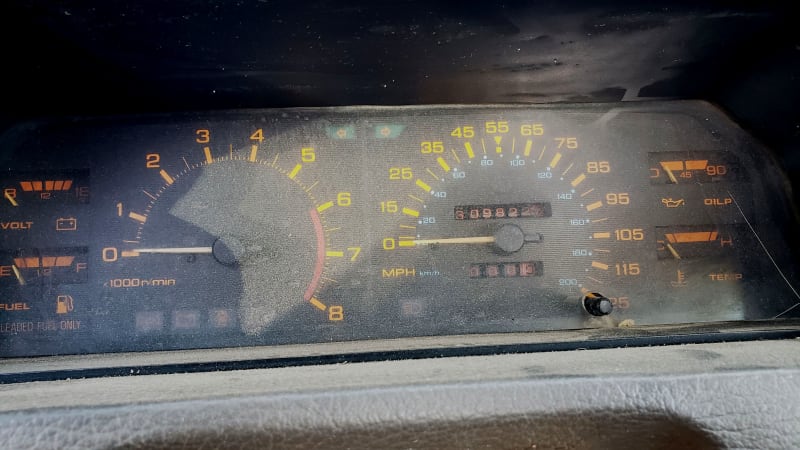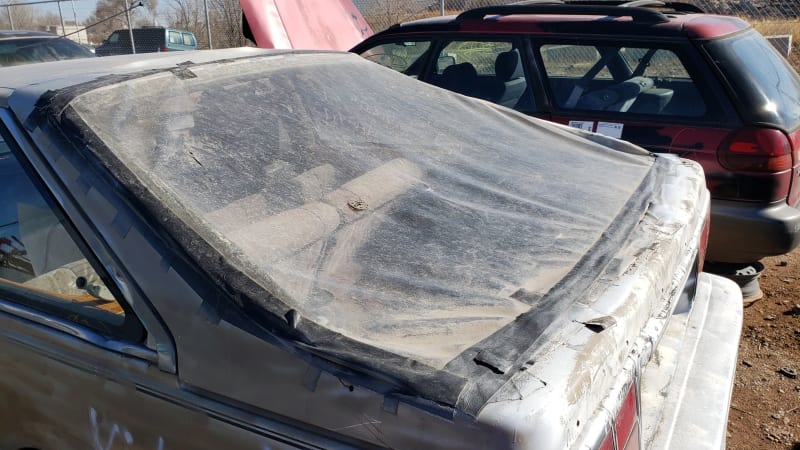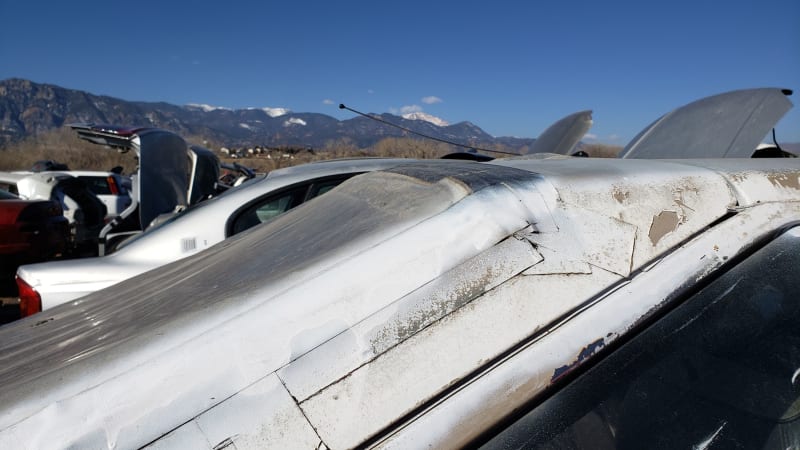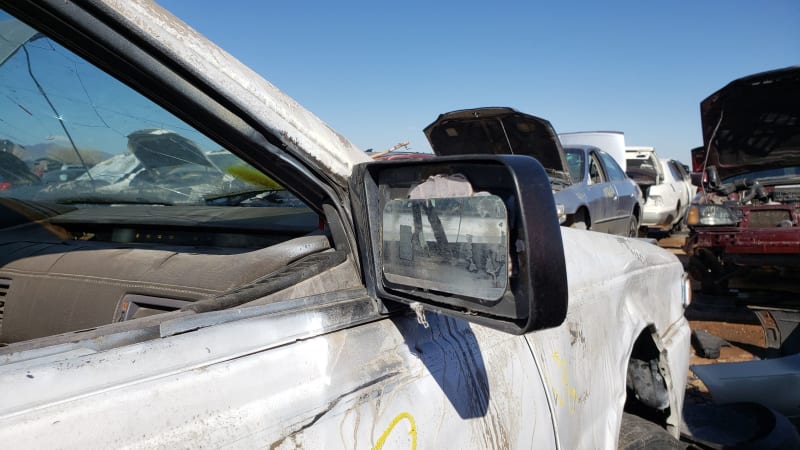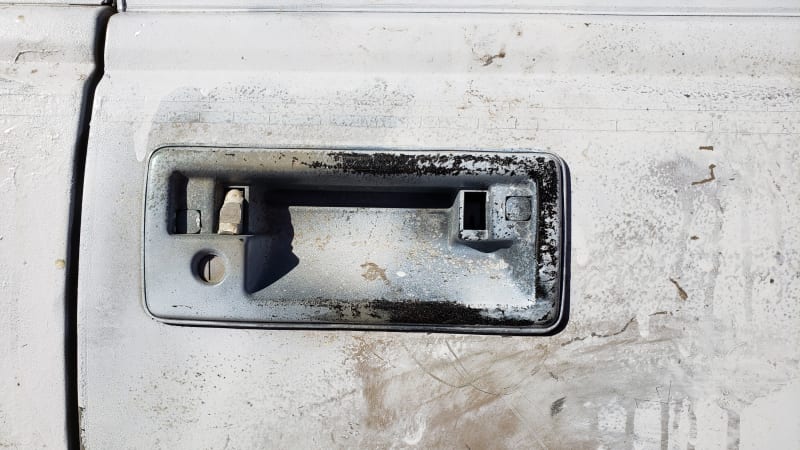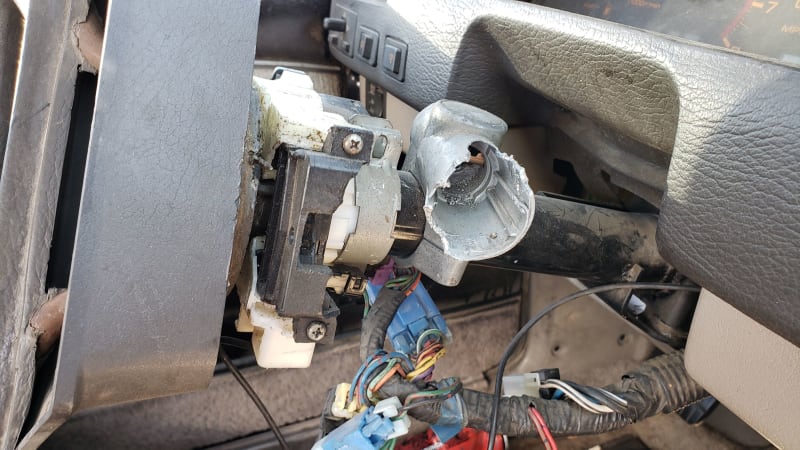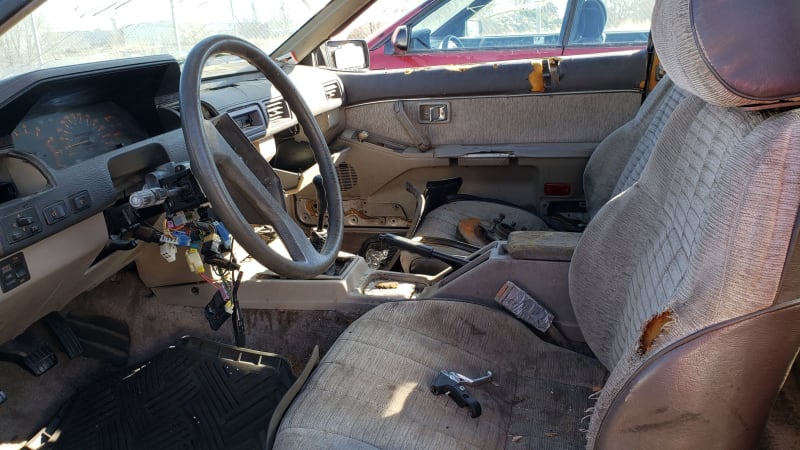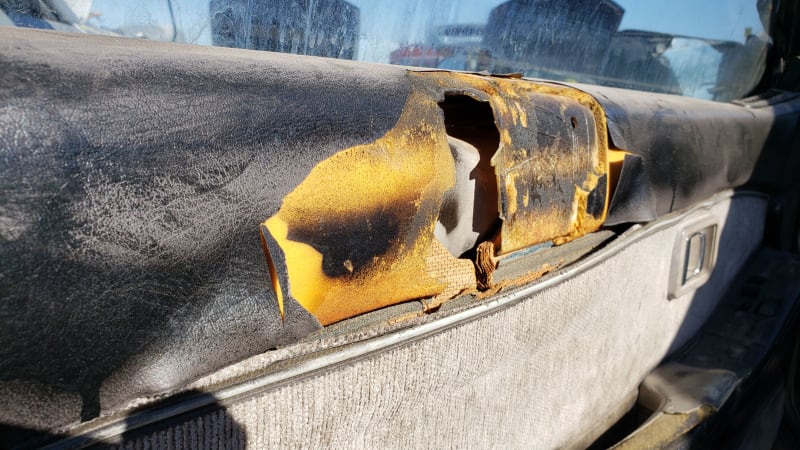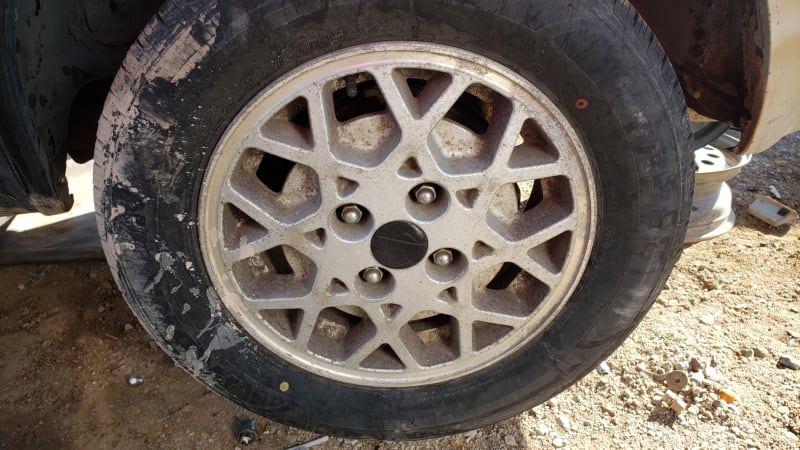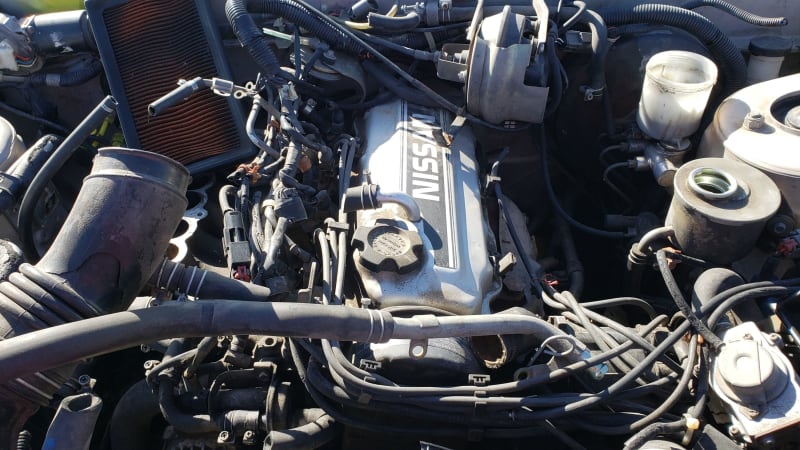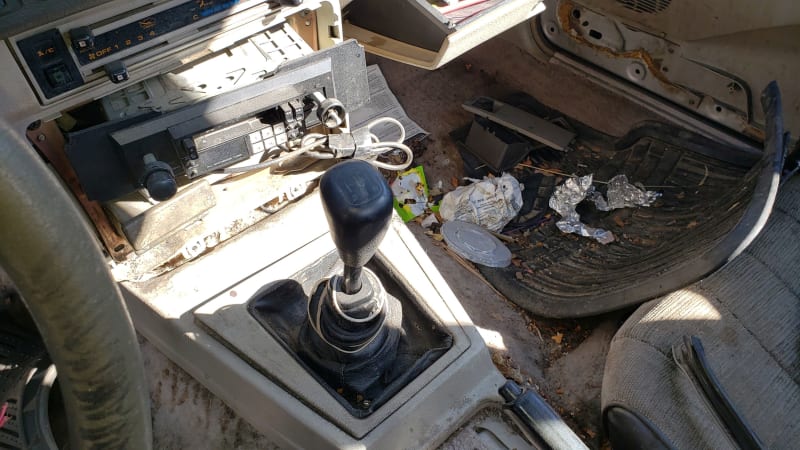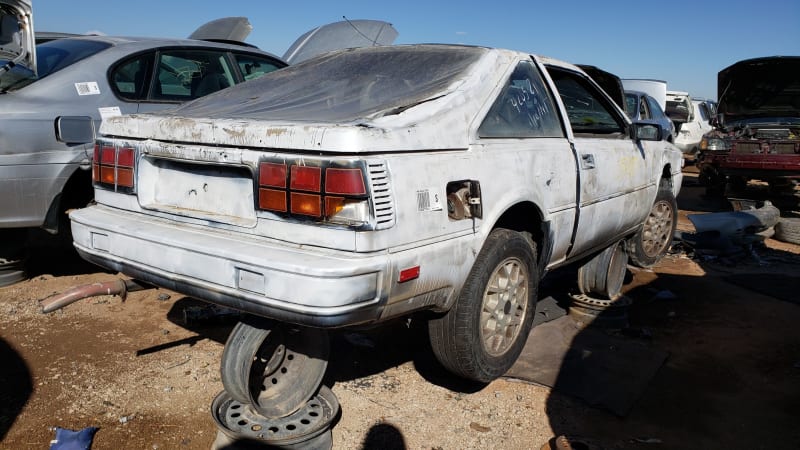Nissan began selling Americanized versions of the Silvia here in the 1977 model year, badged as the 200SX. Equipped with a five-speed transmission and AM/FM stereo as standard equipment (both stunningly pricey options on most cars at the time), the original 200SX was a good value in an affordable rear-wheel-drive sport coupe. This continued with subsequent generations of the car; the 1980-1983 S110 version sold reasonably well on our shores and its 1984-1988 S12 successor (now sporting Nissan badges) competed straight-up against the Toyota AE86 here and spent quite a while as a common sight on American roads. Today’s Junkyard Gem is one of those now-rare S12s, a car that lived a long and eventful life, enduring a painful downward spiral into utter decrepitude before ending its days in a self-service yard near Pikes Peak.
While I find plenty of discarded Toyotas and Hondas showing better than 300,000 miles on their odometers, a junkyard Nissan showing that kind of final mileage is more unusual (though I documented a nicely preserved ’87 Maxima that came close to the 350,000-mile mark a couple of years back, and plenty of 1980s Nissans show up in car graveyards with well over 200,000 miles). While there have been notable exceptions, most big-final-mile cars I find look amazingly clean and well-preserved, no doubt because owners must be fastidious about maintenance in order to get any vehicle — no matter how well-built — past 200k territory.
Such is not the case with this Nissan, which achieves a very high reading on the Hooptie-O-Meter. We’ll start with the rear glass, which has been replaced by plastic sheeting affixed with multiple strata of glue and tape.
The replacement “glass” is thicker material than what you generally see with this sort of field-expedient repair, and repeated applications of tape, glue, and paint made it semi-weatherproof. Whoever did this work intended it to last for more than a few months, yet apparently held deep philosophical convictions about not spending real money on car repairs.
The right-side mirror lost its original glass, so a giant blob of what appears to be Liquid Nails was used as a mount for a thrift-store makeup mirror. You have to admire this sort of post-apocalyptic ingenuity.
The passenger-side door handle failed long ago. So what? You only need one working door (and this sort of problem could be a lot worse).
The ignition lock has been punched out in most brutal fashion, enabling the car to be started with a screwdriver. Whether this modification was done by thieves or an owner frustrated by the expense of a lost ignition key must remain a mystery to us.
The interior is pretty icky, but the wear and tear looks more like a gradual descent into squalor rather than the intentional damage you see with cars whose final owners know they’re the final owners.
Decades of arms resting on this spot on the driver’s-side door panel have worn the panel all the way down to the steel.
Somehow, the optional factory aluminum wheels stayed with this car to the end.
This is the 2.0-liter CA20E straight-four DOHC engine, which offered 102 horsepower when new. I suspect it was making many fewer horses by the end.
A four-speed automatic was available for an extra 500 bucks (about $1,295 in 2022 dollars), but this car has the sturdier five-speed manual.
When new, this was considered a rakish and sporty machine. The MSRP for the 1986 Nissan 200SX hatchback came to $9,999 for the base trim level and $11,099 for the snazzier XE (about $25,885 and $28,730 today, respectively). The Corolla AE86 GT-S liftback cost just $9,428 that year, and it had a 10-horsepower edge over the 200SX.
A V6 became available for the 1987 model year, while the 200SX-buying demographic remained unchanged.
Who’s got the goodies? Nissan!
This home-market ad for the 1986 Silvia emphasized its tasteful design.
I must admit I prefer the more frantic JDM Silvia advertising.
Featuring Karizma!
Source: www.autoblog.com

